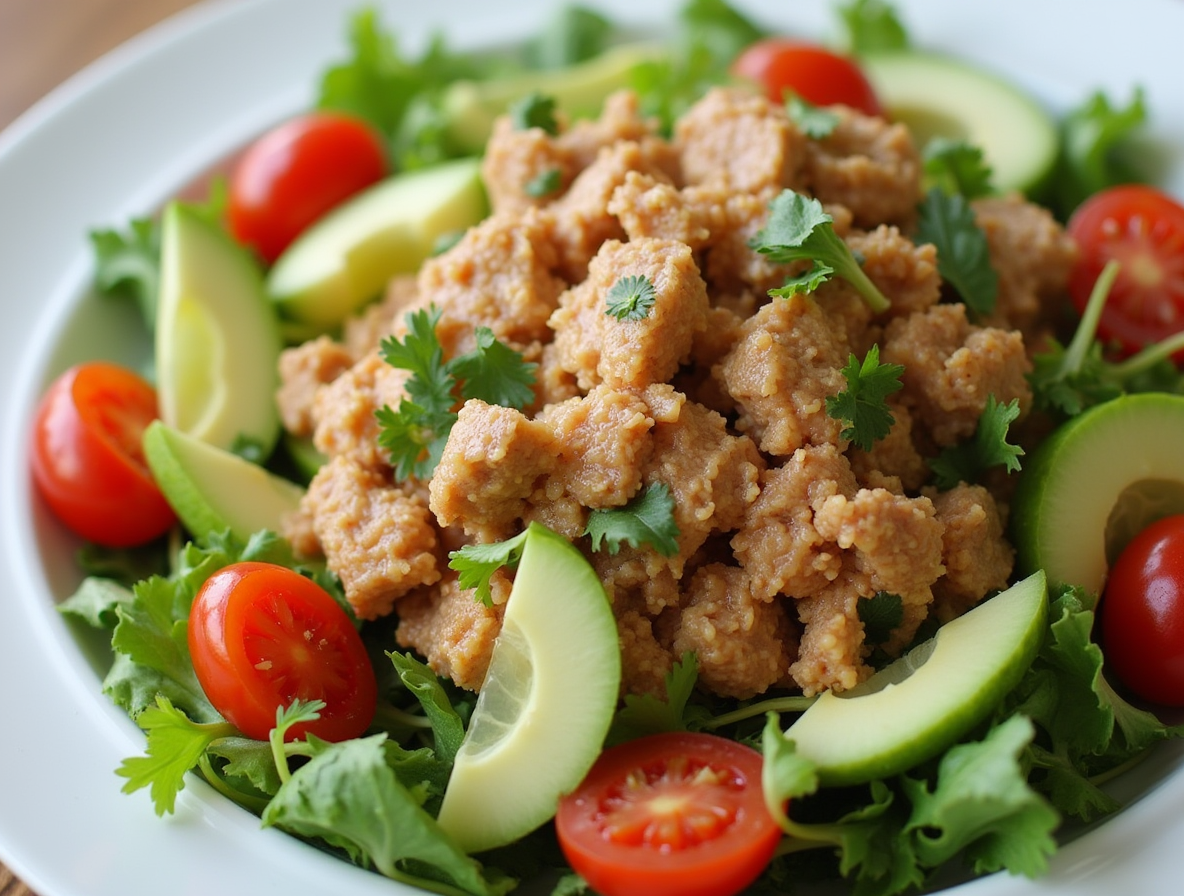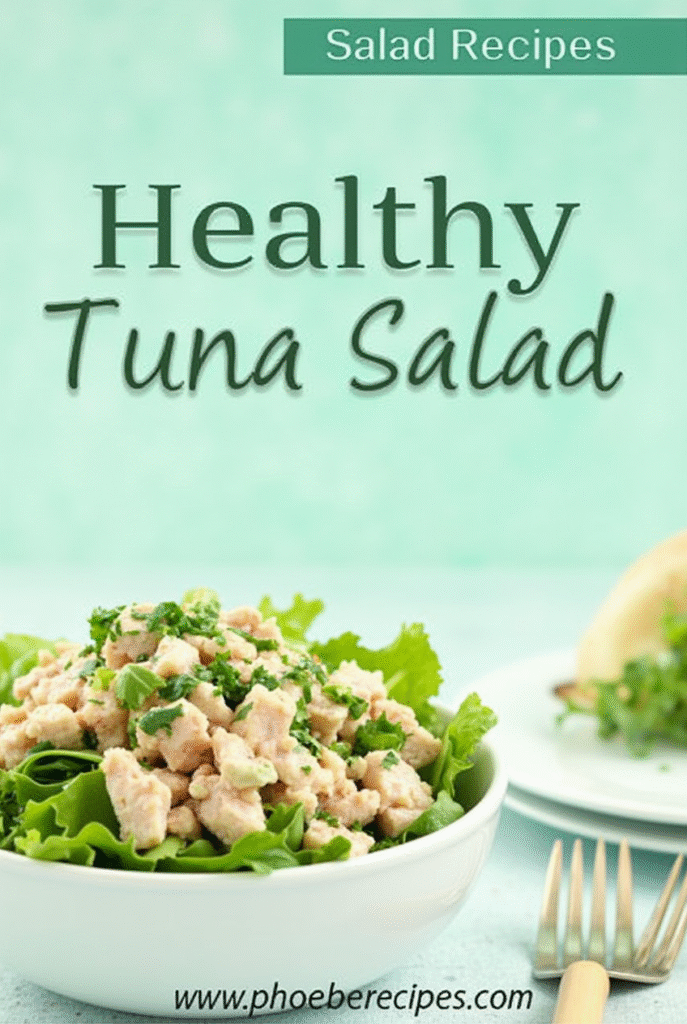Healthy Tuna Salad: A Chef’s Secret Recipe (No Mayo Needed!)
Healthy tuna salad packs an impressive 20g of protein per 3oz serving while containing only about 100 calories. Unfortunately, the traditional mayo-loaded version can quickly sabotage your nutrition goals, adding more than 1400 calories and 24g of fat per cup of mayonnaise used.
We’ve discovered that creating tuna salad without mayo isn’t just possible—it’s actually better! By using Greek yogurt instead of mayonnaise, you’ll get a creamy texture with significantly less fat and higher protein content. In fact, our healthy tuna salad recipe delivers approximately 34.3g of protein per serving. This nutritional powerhouse comes together in just 15 minutes, making it perfect for quick lunches or meal prep since it stays fresh in the refrigerator for up to 5 days.
The problem with traditional tuna salad
Traditional tuna salad, despite its popularity, often comes with several nutritional drawbacks that can sabotage your health goals. Let’s examine why the classic mayo-heavy version might not be your best choice and explore some tasty alternatives.
Why mayo-based tuna salad isn’t ideal
The standard tuna salad relies heavily on mayonnaise, which adds a staggering 90-100 calories per tablespoon. If you’re generous with the mayo, you could be adding over 1400 calories and 24g of fat per cup used. Furthermore, many restaurants load their tuna salads with excessive mayonnaise, making them unnecessarily calorie-dense.
Beyond the calorie concerns, there are food safety issues to consider. Mayo-based tuna salad has a limited shelf life of only three to four days after preparation. When left at temperatures between 40-140°F, bacteria can begin growing in as little as two hours. This becomes especially problematic in restaurant settings where, according to clinical dietitians, “tuna salad is not the most popular menu choice, so there is a good chance the tuna has been open for 3 days or longer”.
Additionally, commercial mayonnaise in the United States is typically made with soy oil, which contains high levels of omega-6 fatty acids. According to nutritionists, these can increase blood pressure levels along with cholesterol when consumed excessively.
Most of us have experienced what food experts call a “sad tuna salad sandwich” – that watery, greasy mess served between pale slices of white bread. Certainly not the culinary experience we deserve!
Healthier alternatives to mayonnaise
Fortunately, there are numerous delicious substitutes that maintain the creamy texture while boosting nutritional value:
- Greek yogurt provides a thick, tangy base that’s significantly lower in calories (just 20 calories per two tablespoons compared to 188 calories in the same amount of mayo). It also delivers extra protein, calcium, phosphorous, potassium, and probiotics.
- Mashed avocado adds a rich, buttery texture and healthy fats. With 10 grams of fiber, some protein, low sodium, and no cholesterol, avocados create a nutrient-dense spread.
- Hummus brings protein, fiber, and calcium with very little fat. Its savory flavor complements tuna beautifully.
- Olive oil-based dressings with lemon juice and Dijon mustard offer heart-healthy unsaturated fats. Though not low-calorie, they provide better nutritional value than traditional mayo.
Other excellent options include cottage cheese (high protein, low calorie), tahini (sesame seed paste with olive oil), and tzatziki (Greek yogurt with cucumber and herbs). Each alternative not only reduces calories but also adds unique flavors and nutritional benefits to your tuna salad.
Key ingredients for a healthy tuna salad
Creating the perfect healthy tuna salad begins with selecting the right ingredients. First and foremost, quality matters—each component contributes to both nutrition and flavor in your mayo-free creation.
Tuna: best types to use
Solid white albacore tuna stands out as the premier choice for healthy tuna salad due to its firm texture and mild flavor that won’t overwhelm other ingredients. This variety comes in larger, meatier chunks that hold up well when mixed. Generally, water-packed tuna is preferable for health-conscious recipes as it contains less fat than oil-packed versions. For optimal nutrition, look for wild-caught options with the dolphin-safe label, which typically delivers about 20 grams of protein per 3-ounce serving.
Greek yogurt: the creamy substitute
Plain Greek yogurt creates the perfect creamy base without mayonnaise’s drawbacks. Unlike regular yogurt, Greek yogurt’s thicker texture and tangier flavor more closely mimics mayonnaise. Ideally, choose full-fat or 2% varieties rather than non-fat, as they provide better creaminess and less tanginess. One remarkable benefit: Greek yogurt delivers extra protein alongside probiotics, making your tuna salad even more nutritious.
Crunchy add-ins: celery, onion, and more
The textural contrast of crunchy vegetables transforms ordinary tuna salad into something special. Essential additions include:
- Finely chopped celery for classic crunch
- Red onion (milder than white) or green onions for zesty flavor
- Shredded carrots for color and natural sweetness
- Red cabbage for vibrant color and texture
- Bell peppers for vitamin-rich crunch
These vegetables not only enhance texture but significantly boost nutritional value without adding many calories.
Flavor boosters: lemon, mustard, herbs
Ultimately, what elevates healthy tuna salad is its vibrant flavor profile. Freshly squeezed lemon juice cuts through the richness while reducing “fishiness”. Dijon mustard provides tangy depth and actually helps emulsify the mixture for creaminess. Fresh herbs like parsley, dill, or cilantro add brightness, while garlic powder or minced garlic delivers savory notes. For extra dimension, consider adding dill pickles, capers, or even a pinch of red pepper flakes.
How to make tuna salad without mayo
Making a delicious healthy tuna salad without mayo is surprisingly straightforward. With a few simple swaps and techniques, you’ll create a protein-packed meal that’s both nutritious and satisfying.
Step-by-step preparation
Preparing tuna salad without mayo starts with proper draining. First, drain liquid from your tuna cans thoroughly. Afterward, place the tuna in a mixing bowl and use a fork to flake apart any large chunks. For the best creamy substitute, you have two excellent options:
- Greek yogurt method: Combine tuna, Greek yogurt, chopped vegetables, Dijon mustard, salt, and pepper in a large mixing bowl. Mix until well combined, then finish with lemon juice to taste.
- Olive oil dressing method: Whisk together olive oil, lemon juice, Dijon mustard, herbs, and salt in a small bowl. Add this dressing to your flaked tuna and vegetables, mixing until everything is evenly coated.
Tips for best texture and flavor
Consequently, the secret to exceptional texture lies in ingredient preparation. Dice all vegetables very finely—this makes everything easier to combine and eat. Moreover, rinsing red onions in a sieve after dicing gives them a milder flavor.
Don’t skip the Dijon mustard! Since mayo has a tangy flavor, Dijon helps mimic that quality without the extra calories. Furthermore, chilling your tuna salad without mayo before serving allows flavors to meld together properly.
Make-ahead and storage advice
This Greek yogurt tuna salad keeps remarkably well, making it perfect for meal prep. Store leftover tuna salad in an airtight container in the refrigerator. Properly stored, your healthy tuna salad recipe stays fresh for 3-5 days.
Nevertheless, refrigerate within 2 hours of preparation to maintain food safety. For large gatherings or weekly meal prep, you can easily double or triple the recipe. Simply slide the serving number in most recipes to automatically adjust ingredient quantities.
Creative ways to serve your tuna salad
Your perfectly prepared healthy tuna salad deserves creative serving options that go well beyond the basic sandwich. Let me show you some delicious ways to enjoy your mayo-free creation that will keep meals exciting throughout the week.
Lettuce wraps and low-carb options
For those watching their carb intake, lettuce wraps offer a refreshing crunch while letting the flavors of your healthy tuna salad shine. Simply spoon your mixture into crisp lettuce cups for a satisfying low-carb meal. Similarly, hollowed-out tomatoes make elegant vessels that add juicy freshness to complement your tuna.
Mini sweet peppers provide another colorful low-carb option—they make quick lunches that even kids enjoy. Likewise, for those following keto or paleo diets, these veggie-based serving methods ensure you stay on track while enjoying a protein-packed meal.
Sandwiches, toasts, and melts
Admittedly, the classic tuna sandwich remains popular for good reason. Serve your healthy tuna salad on toast, either open-faced or between two slices of bread with lettuce and tomatoes. Sourdough makes an excellent base—try spreading a thin layer of your Greek yogurt tuna salad on toasted sourdough topped with arugula and pickled onions for an elevated experience.
First, toast your bread of choice. Second, add your tuna mixture. Finally, for the ultimate comfort food, transform your creation into a tuna melt by adding cheese and grilling until golden. This method works wonderfully with the tangier profile of mayo-free tuna salad.
Tuna salad bowls and stuffed avocados
Perhaps the most Instagram-worthy serving option is the stuffed avocado. This simple yet elegant presentation involves cutting avocados in half, removing the seed, and filling each half with your tuna mixture. The combination of creamy avocado with protein-rich tuna creates a satisfying meal that’s low-carb, keto-friendly, and packed with healthy fats.
For a more substantial option, create tuna salad bowls using various bases like brown rice, quinoa, or cauliflower rice for a lower-carb alternative. Top with your healthy tuna salad and add cucumber, cabbage, and other fresh vegetables for a complete meal that’s both nutritious and visually appealing.
Conclusion
After exploring the world of mayo-free tuna salad, we can confidently say that healthier alternatives actually enhance rather than compromise this classic dish. Greek yogurt stands out as the star substitute, slashing calories while boosting protein content to an impressive 34.3g per serving. Most importantly, this simple swap addresses both nutritional concerns and food safety issues that plague traditional recipes.
Making this switch takes just 15 minutes of your time but delivers days of delicious, nutrient-dense meals. The versatility amazes even skeptical food lovers – whether you prefer the crunch of lettuce wraps, the comfort of a warm melt, or the elegance of stuffed avocados. Additionally, the extended refrigerator life of 3-5 days makes this recipe perfect for busy weekday meal planning.
Though traditional recipes might seem familiar, our healthier approach offers significantly better nutrition without sacrificing flavor or texture. The combination of protein-rich tuna, creamy Greek yogurt, crunchy vegetables, and zesty flavor boosters creates a balanced dish that supports your health goals while satisfying your taste buds.
We believe this healthy tuna salad deserves a permanent place in your recipe collection. The next time you crave a quick, protein-packed meal, skip the mayo and reach for Greek yogurt instead. Your body will thank you for the extra protein, reduced calories, and delicious flavors that prove healthy eating never needs to feel like a compromise.
FAQs
Q1. What are some healthy alternatives to mayonnaise in tuna salad? Greek yogurt is an excellent substitute, providing a creamy texture with fewer calories and more protein. Other options include mashed avocado, hummus, or olive oil-based dressings with lemon juice and Dijon mustard.
Q2. How can I make tuna salad more nutritious? Add crunchy vegetables like celery, red onion, and shredded carrots for extra nutrients and texture. Incorporate flavor boosters such as lemon juice, Dijon mustard, and fresh herbs like parsley or dill. Choose water-packed, wild-caught tuna for optimal nutrition.
Q3. Is tuna salad a good option for weight loss? Yes, when prepared healthily. Tuna is high in protein, which helps build muscle and boost metabolism. Using Greek yogurt instead of mayonnaise significantly reduces calories while maintaining a creamy texture, making it a great weight-loss friendly option.
Q4. How long can I store homemade tuna salad in the refrigerator? When properly stored in an airtight container, healthy tuna salad can stay fresh for 3-5 days in the refrigerator. However, for food safety, make sure to refrigerate it within 2 hours of preparation.
Q5. What are some creative ways to serve tuna salad without bread? Try stuffing avocado halves with tuna salad for a low-carb, high-healthy-fat meal. You can also serve it in lettuce wraps, hollowed-out tomatoes, or mini sweet peppers. For a more substantial option, create tuna salad bowls using bases like quinoa or cauliflower rice.


